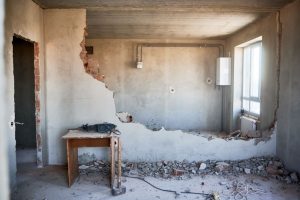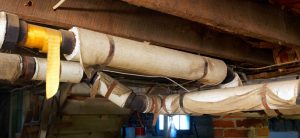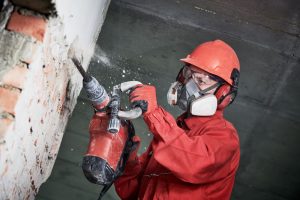If you live or work in an old building, you may face a hidden danger: lead exposure. Many older buildings, especially those built before 1978, were constructed with lead materials. While lead-based paint has been banned for decades, it can still be found in many older buildings, lurking beneath layers of newer paint.
This poses a severe health threat to those who occupy these buildings, as lead exposure can harm the brain and nervous system. Environmental Demolition Group discusses the dangers of lead in old buildings, where it can be found, and the importance of lead abatement to protect yourself and others from this toxic substance.
Related Post: Lead Abatement FAQs
Common Hiding Places of Lead in Your Building
Lead, a hazardous material, can be stealthily present in several locations within an old building, making it imperative to know where to look.
Paint
The most prevalent source of lead in older buildings is lead-based paint. Although it’s often found on walls, its presence isn’t limited to them. Windowsills, door frames, and even baseboards can harbor layers of lead paint covered by non-lead-based paints applied over the years.
Plumbing Materials
Apart from paint, lead can also be found in plumbing materials, including pipes and solder, especially in buildings constructed before 1986. This is concerning because it can leach into the building’s water supply, posing a risk to everyone who drinks it.
Soil
Lead can be present in the soil surrounding a building. Over time, lead particles from exterior paint or industrial activities can contaminate the soil, which not only affects outdoor play areas but can also be tracked indoors. Depending on water runoff, lead can get into the water supply for wells.
Roofing and Flooring Materials
Older vinyl flooring and even some roofing materials may contain lead, adding to the list of potential sources within a building.
Awareness and identification of these hiding places are crucial steps in addressing the dangers of lead exposure.
Understanding the Symptoms of Lead Poisoning
Recognizing the symptoms of lead poisoning is critical for early detection and intervention. Initially, lead poisoning can be hard to identify due to its vague and nonspecific symptoms, which may resemble those of other common health conditions.
In children, lead poisoning often manifests as:
- Developmental delays
- Learning difficulties
- Loss of appetite
- Irritability
- Weight loss
- Sluggishness
- Fatigue
Adults may experience symptoms such as:
- High blood pressure
- Joint and muscle pain
- Headache
- Difficulties with memory or concentration
- Abdominal pain
- Mood disorders
- Reduced sperm count and abnormal sperm in men
- Pregnant women exposed to lead face additional risks, including potential harm to the fetus and increased chances of miscarriage or premature birth.
Since these symptoms can be mistaken for many other illnesses, potential lead exposure must be considered when diagnosing unexplained health issues, particularly in individuals living or working in older buildings.
The Importance of Lead Abatement and Safe Removal Practices
Lead abatement is a critical process aimed at permanently eliminating lead-based paint hazards to ensure a safe environment for occupants. This process is essential for reducing the risk of lead poisoning and complying with local and federal regulations regarding lead safety.
Engaging in lead abatement requires professional expertise, as improper handling of lead-contaminated materials can inadvertently increase the risk of lead exposure. Professionals use specialized techniques and equipment, such as chemical strippers, wet sanding, and HEPA vacuuming, to safely remove or stabilize lead-based paint.
Furthermore, during renovation or demolition activities in older buildings, it’s imperative to implement containment strategies to prevent lead dust from dispersing into the air and surrounding areas. Safe removal practices also involve properly disposing of lead waste according to environmental protection guidelines to avoid further contamination.
Related Post: Lead Abatement Methods Used on Commercial Sites
Lead Abatement in Cincinnati
Contact Environmental Demolition Group or call 859-363-4863 to learn more about how our team has the expertise and certifications to complete lead abatement and other renovation services. We also specialize in asbestos removal in the Cincinnati area and anywhere in the Midwest or Mid-Atlantic states.





